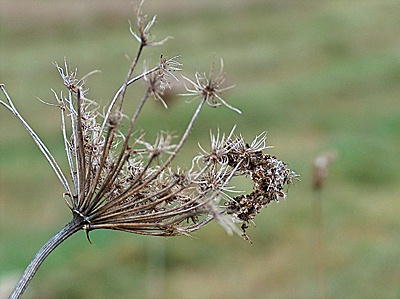All Nonfiction
- Bullying
- Books
- Academic
- Author Interviews
- Celebrity interviews
- College Articles
- College Essays
- Educator of the Year
- Heroes
- Interviews
- Memoir
- Personal Experience
- Sports
- Travel & Culture
All Opinions
- Bullying
- Current Events / Politics
- Discrimination
- Drugs / Alcohol / Smoking
- Entertainment / Celebrities
- Environment
- Love / Relationships
- Movies / Music / TV
- Pop Culture / Trends
- School / College
- Social Issues / Civics
- Spirituality / Religion
- Sports / Hobbies
All Hot Topics
- Bullying
- Community Service
- Environment
- Health
- Letters to the Editor
- Pride & Prejudice
- What Matters
- Back
Summer Guide
- Program Links
- Program Reviews
- Back
College Guide
- College Links
- College Reviews
- College Essays
- College Articles
- Back
Pathogens
Pathogens are disease-carrying infectious agents. These potent germs come in five varieties: viruses, bacteria, fungi, parasites, and prions.
Viruses are the first variety. Diseases caused by viruses can be as common as a cold or influenza, or as lethal as Ebola virus or HIV/AIDS. Viruses are tiny germs that can be transfer from host to host horizontally (person to person through coughing, fluid exchange, etc.) or vertically (mother to child), though horizontal is more common. Once the virus has invaded the host it replicates extremely quickly resulting in the host’s sickness. Because they are not entire cells themselves, viruses cannot replicate outside of the host. In order to replicate, they must invade a cell inside the body and make that cell reproduce more of itself- virus included. Once detected by the host’s immune system, the virus will be attacked and bound by antibodies then exterminated by T-cells. Once all the viruses are dead, they stop affecting the host and can no longer be transferred to other hosts.
The next variety of pathogen is bacteria. Not all bacteria cause disease, only a small percentage is considered pathogenic, or disease-carrying. Pathogenic bacteria cause diseases such as tuberculosis, pneumonia, leprosy, meningitis, tetanus, and salmonella. Bacteria always pass from host to host horizontally, through cuts, coughs, food, fluid exchange, etc. Seeing as bacteria are complete organisms all they have to do to infect a host is enter the body. Then they reproduce and voila! Illness occurs. They can be taken down by the same processes as viruses. Potential hosts can be made immune to bacteria (and viruses) through vaccination, which is the injection of weak or dead pathogens into the host so that the immune system can learn how to fight it so as to be prepared for any more of that pathogen and be able to shoot it down before illness onsets.
The third variety of pathogen is fungus. The study of pathogenic fungi is so different from that of regular medical microbiology that is has its own name: Medical Mycology. Fungi are the most common cause of disease in plants (fungi are not plants themselves, they come from a whole different biological kingdom). In humans they cause such illnesses as athlete’s foot, yeast infection, and some other skin and nail infections. In order to infect a host all they must do is (such as in the case of a nail infection (often caused by fungi known as dermatophytes)) make contact with any little cut on the foot. Then they climb in and start snacking on your nails, leaving nasty yellow streaks or white dots. Nail fungus is very difficult to remove but it can be done with medication or, at worst, through surgery.
Parasites are another kind of pathogen. Unlike the other types, parasites have many subsets including helminthes, ectoparasites, and protozoa. Protozoa and helminthes wreak their havoc inside of the host, where are ectoparasites stay outside. Parasites cause hookworm, Giardia, malaria, sleeping sickness, and river blindness. Similar to fungi and bacteria, parasites are complete organisms and can therefore find hosts on their own if necessary. They can just crawl up on the host (such as in the case of lice or fleas) and the host is infected. In ectoparasitic infections such as lice or fleas, the infection can be abolished simply through the removal of the parasite. Endoparasitic infections such as Giardia are most usually contracted through the host swallowing the pathogen and must be removed by other means such as medication or some kind of intestine flush.
Prions are the smallest and most novel known pathogen. The name “prion” is contracted from the word “protein” because that is the basic constitution of a prion. Prions cause such diseases as kuru, scrapie, all Spongiform Encephalopathies, Creutzfeldt-Jakob disease as well as Variant Creutzfeldt- Jakob disease, and Alzheimer’s. Prions almost exclusively reach their hosts through ingestion, usually the ingestion of a member of their same species, such as in Bovine Spongiform Encephalopathy, scrapie, and kuru. All Prion diseases cause the deterioration of the nervous system and all are fatal. Spongiform Encephalopathies are called such because prions turn the brain into a sponge. Similar to viruses, prions cannot reproduce on their own, seeing as they are constituted entirely of RNA. Scientists are not yet sure how they replicate once they reach the brain, and thus there is no known cure for any prion diseases.
These five varieties of pathogens are the key to understanding medical microbiology.

Similar Articles
JOIN THE DISCUSSION
This article has 0 comments.